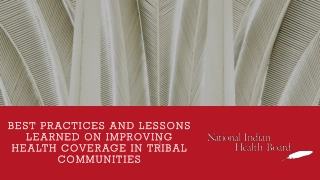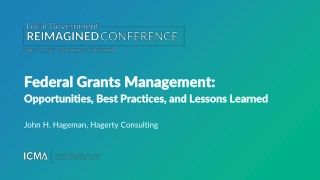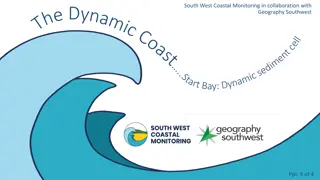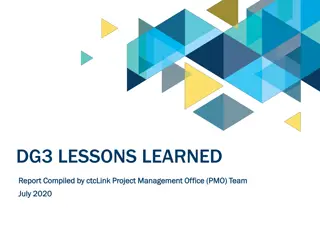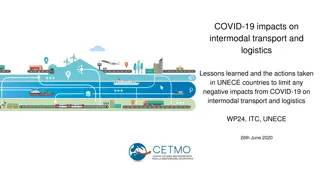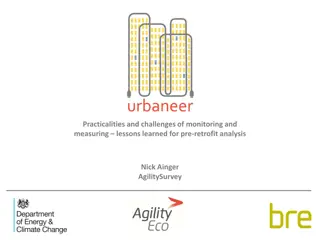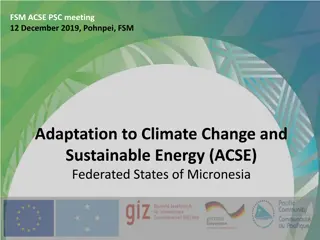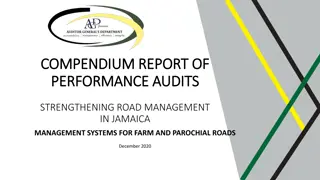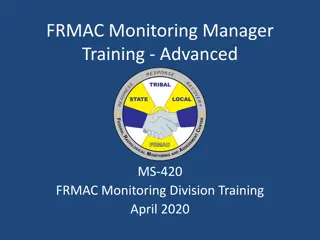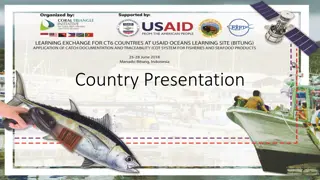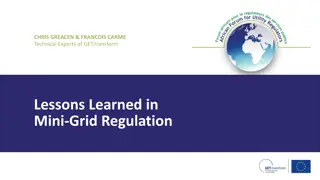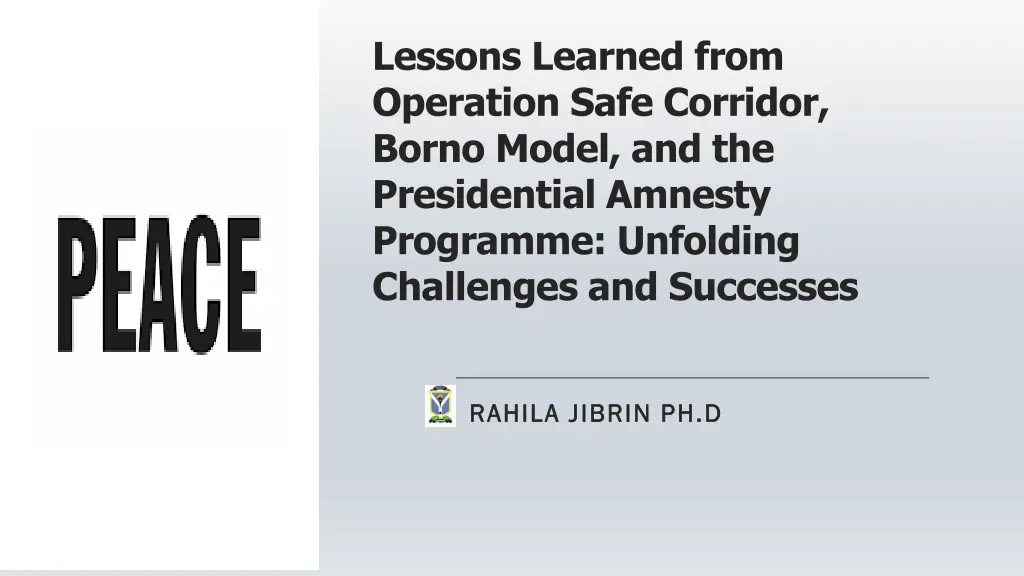
Unfolding Challenges and Successes of Operation Safe Corridor, Borno Model, and Presidential Amnesty Programme
Explore the complexities of Nigeria's Northeast conflict and the interventions aimed at peace restoration. Dive into the successes and challenges of Operation Safe Corridor, Borno Model, and the Presidential Amnesty Programme. Learn through empirical data and key informant interviews to inform policies and interventions.
Download Presentation

Please find below an Image/Link to download the presentation.
The content on the website is provided AS IS for your information and personal use only. It may not be sold, licensed, or shared on other websites without obtaining consent from the author. If you encounter any issues during the download, it is possible that the publisher has removed the file from their server.
You are allowed to download the files provided on this website for personal or commercial use, subject to the condition that they are used lawfully. All files are the property of their respective owners.
The content on the website is provided AS IS for your information and personal use only. It may not be sold, licensed, or shared on other websites without obtaining consent from the author.
E N D
Presentation Transcript
Lessons Learned from Operation Safe Corridor, Borno Model, and the Presidential Amnesty Programme: Unfolding Challenges and Successes RAHILA RAHILA JIBRIN JIBRIN PH.D PH.D
Introduction Cont.. The intricate and persistent conflict in Nigeria s Northeast has necessitated the implementation of some aimed at restoring lasting peace and security in this region though Deradicalization, Rehabilitation, and Reintegration (DRR) programmes/interventions the Presidential Amnesty Programme (PAP), Operation Safe Corridor (OSC) and The Borno Model
Introduction These programmes are soft approach policy of the Nigerian government to deradicalize, rehabilitate and reintegrate Boko Haram and ISWAP, especially in the Northeast There are successes that have been recorded in these programmes and interventions There are also Challenges recorded .
Purpose This review interventions to examine : is an empirical exposition of these programmes and the successes and challenges through secondary data (reports, research studies and policy documents) and primary data (Key Informant Interviews, KIIs) to guide policies and practical interventions.
Purpose This review interventions to examine : is an empirical exposition of these programmes and the successes and challenges through secondary data (reports, research studies and policy documents) and primary data (Key Informant Interviews, KIIs) to guide policies and practical interventions.
Interventions in Nigeria Intervention are not new, the nation has implemented one in recent times and have proven, to some extent successful restore lasting peace: Niger Delta is the Presidential Amnesty Programme (PAP). Although the PAP was initiated in June 2009 by the late President Musa Yar adua it has become an enduring programme as a mechanism for lasting peace and transitional justice in the South-south
Interventions in Nigeria PAP: Oluwaniyi (nd.) noted that the amnesty programme in the Niger Delta can be traced back to 1967, when the then military Head of State, Yakubu Gowon regime pardoned the Niger Delta Volunteer Force (NDVF) In recent years, the attention has shifted to the Boko Haram insurgency which has birthed the Operation Safe Corridor (OSC) and The Borno Model
Operation Safe Corridor (OSC) Operation Safe Corridor was launched in 2016. It was designed by the Nigerian government to offer a path to rehabilitation for repentant Boko Haram militia through vocational training, and psychosocial support before reintegrating them into communities
Operation Safe Corridor (OSC) Works by the likes of Omotuyi (2022), Osungboye (2022), Ike (2022) and Osungboye (2022) argued that that while Operation Safe Corridor could be a good path towards restoring security in the Northeast, it faces numerous challenges. One of the challenges is the lack of a definite agenda to economically engage these ex-insurgents.
Operation Safe Corridor (OSC) communities affected by Boko Haram have little faith in the ability of the former Boko Haram members to genuinely repent of their sins. Most of them accept repentance due to duress or from the fear of being killed. that the Operation Safe Corridor was deficient in clear reintegration and implementation strategies and if care is not taken, the programme will only compound the activities of the insurgency in the Northeast and Nigeria as a whole.
Operation Safe Corridor (OSC) Operation Safe Corridor focuses more on giving stipends to the deradicalized ex-insurgents which may not be enough for them to cater for themselves and loved ones. Issues of lack of transparency and corruption have also been reported in the operation of the programme
Operation Safe Corridor (OSC) Operation Safe Corridor focuses more on giving stipends to the deradicalized ex-insurgents which may not be enough for them to cater for themselves and loved ones. Issues of lack of transparency and corruption have also been reported in the operation of the programme The programme still struggles to overcome continued public hostility and opposition including some prominent politicians, who describe it as providing amnesty and support to terrorists or criminals who should instead be punished (Crises group, 2021)
Operation Safe Corridor (OSC) That is not to say OSC has no success stories. It is one unique programme that significantly changed approach to tackling the insurgency in the Northeast the narrative of government InIt helped Boko Haram defectors reintegrate into civilian life
The Borno Model the Borno Model is the latest and bigger umbrella that focuses on the use of dialogue to persuade Boko Haram and ISWAP fighters to put down their weapons and embrace peace. It was launched inApril 2022 The framework relies heavily on rehabilitation, reconciliation and reintegration.
The Borno Model . The United Nations stressed that the Borno Model is a response to the Borno State government on the mass surrendering of Boko Haram and ISWAP insurgents The core of the Borno Model is a non-kinetic approach that stresses community-based strategies and local participation in rebuilding and addressing the immediate needs of the affected population and the root cause of the extremism in the state.
Successes and Challenges of the Programmes . The soft approaches of the Nigerian government to deradicalize, rehabilitate, and reintegrate repentant Boko Haram and ISWAP extremists back into different communities in Nigeria have registered some level of success and also challenges. T he non-kinetic approaches such as the Presidential Amnesty Programme, Operation Safe Corridor and recently the Borno Model can help peacebuilding or compound the already fragile peace experienced.
Successes: Operation Safe Corridor and the Borno Model The reduction of the strength of Boko Haram and ISWAP. These collective have reduced the number of active fighters and cut off the recruitment channels in these sects. The Daily Post reported that the Chief of Defence Staff, General Christopher Musa, said a total of 129,417 Boko Haram terrorists and their family members surrendered to security forces between July 10 and December 9, 2024 (Tauna, 2024).
Successes: Operation Safe Corridor and the Borno Model Improvement in security and stability. The combined efforts of these programmes aimed to deradicalize, rehabilitate and reintegrate ex-fighter have improve security and stability in the Northeast. For instance, fighters can surrender and be pardon, they serve as tools to persuade their member to accept the government policies and they are also used as guides in finding lasting peace in the Northeast..
Successes: Operation Safe Corridor and the Borno Model These programmes have also enhanced community resilience. Since the programmes are aimed at community engagement, economic empowerment, and infrastructure rebuilding, the programmes have encouraged community resilience against radicalism and insurgency.
Challenges: Operation Safe Corridor and the Borno Model Ideology issue is often described as having two key elements: opposing democracy and rejection of Western education. Boko Haram s ideology goes beyond just hatred of Western education but (1) religious exclusion Thurston (2016) puts it is very difficult because these programmes lack a practical roadmap in addressing this problem due to its tie to religion
Challenges: Operation Safe Corridor and the Borno Model The problem of long-time commitment and consistent funding of these programmes is essential but sometimes difficult. For instance, HumAngle (a national newspaper) reported that the continued protests by former fighters undergoing rehabilitation by the government over welfare issues are causing serious safety concerns among residents living in Maiduguri (Zanna, 2024) This is a pointer that when funding for these programmes stop, these ex- fighters may be forced to think of alternatives, including re-jointing the sect as a source of livelihood
Challenges: Operation Safe Corridor and the Borno Model Another area of challenge is the issue of monitoring and evaluation. Does the government and stakeholders in these programmes have an effective mechanism to monitor the progress of these programmes
Field Perspectives The Lesson learned has a perspective from the primary data gathered from relevant individuals and representatives of organisations on the successes and challenges of the prgrammes
Methodology The field perspective deployed the qualitative research approach. Utilised the interview method of data collection, Leveraging on Informant, purposively selected based on their depth of knowledge and experiences on the subject matter interview guide elicited information form some key The narrative analysis method was used for data analysis
Key Findings: Successes Presidential Amnesty Programme The business climate was revamp, social order and trust was restored. The amnesty complements the rule of governance in the south-south geo-political zone. The militants aspiration and value changed as the average youth aspires to have a meaningful life that will impact positively on their community by learning skills or gaining scholarship. Youths in the Niger-Delta who are not part of the militants also benefit from the skill acquisition drive by PAP. Before amnesty the production of crude oil dropped to 700,000 barrels per day but after amnesty the production picked up to2.1million barrel per day in 2010.
Key Findings: Successes Operation Safe Corridor (OSC) programme was able to arrest and profile the insurgents from high risk to low-risk individuals. Low risk insurgents are taken to the OSC camp for rehabilitation. The opening up of blocked routes in and around Maiduguri. The creation of North East Development Commission and opening of towns for the NGOs to operate in other to reach the hinterlands. Flights were restored, as well as the restoration of commercial and social life in Maiduguri metropolis.
Key Findings: Successes Operation Safe Corridor (OSC) The programme was able to arrest and profile the insurgents from high risk to low-risk individuals. Low risk insurgents are taken to the OSC camp for rehabilitation. The opening up of blocked routes in and around Maiduguri. The creation of North East Development Commission and opening of towns for the NGOs to operate in other to reach the hinterlands.
Key Findings: Successes Operation Safe Corridor (OSC) Flights were restored, as well as the restoration of commercial and social life in Maiduguri metropolis.
Key Findings: Successes The Borno Model The success of the model is partly due to the political will to do the right thing The people s willingness to forgive, which is key in the success of the Borno Model. The in-fighting between ISWAP and the Shekau s men. The success of this approach saw the release of 22 Chibok girls without paying ransom.
Key Findings: Challenges Operation Safe Corridor and The Borno Model As one of the respondents said there is a gap of the understanding of the value of DDRR programme among certain state actors , and wrong perception of the programmes by some stakeholders. This is counterproductive as people at this level do not give the necessary support. Meanwhile austerity and inflation has affected funding of most programmes. Most of the programmes have not been able to attract any funding (like the PAP, since its existence) outside of government.
Key Findings: Challenges Operation Safe Corridor and The Borno Model Lack of support and commitment from community. At the beginning when the issues of taken back insurgents to their communities after been rehabilitated the community were not in support and some left their communities. That was the obstacle to Operation Safe Corridor s programme and this is partly due to lack of community involvement by the government before they were sent to the community.
Key Findings: Challenges Operation Safe Corridor and The Borno Model Another challenge is that if the family and community need to support the programme then they need to be carried along. Through dialogue meetings and awareness for the by-in of the community.
Key Findings: Best Practices Operation Safe Corridor and The Borno Model For models or approaches to work there is need to imbibe these best practice: Psychological support:. Deradicalisation Community and Family Support:. Vocational training and Education: Community Reintegration
Key Findings: Lessons Learned Operation Safe Corridor and The Borno Model Lessons are for us to learn and to improve on the existing programmes by avoiding mistakes done by others. To address the issue of reconciliation and reintegration the non-kinetic approach is the best. As the most expensive peace is better than the less expensive wars. Wars have been fought but all the gladiators end at the negotiating table.
Key Findings: Lessons Learned Operation Safe Corridor and The Borno Model Community engagement is key for a successful reconciliation and reintegration. Without the community and their readiness to forgive the programme will fail. Furthermore, the message should be design and teased out to fit into a design frame work to meet the peculiarities of the different communities.
Conclusion Overall the different programmes were able to establish contact with the communities through dialogue and others by training the traditional/communities and religious leaders to have a by-in and have ownership of the processes in the communities thus. realising the aim of fostering peace.

